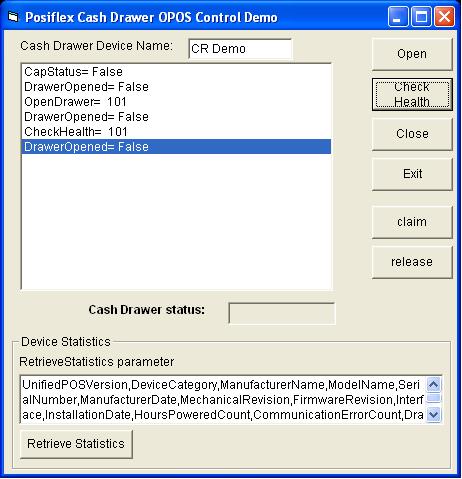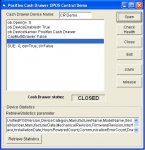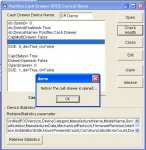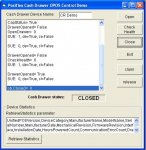hello...
i bought a usb cash drawer for a POS application i'm building in Access...
...can anyone kindly tell me how i utilize the following codes that i captured from screen shots of their "demo" program that was included in the software package. i'm a dummy when it comes to this vb coding...i've got a book and another on the way, but was hoping someone could help me. here's the screenshots of their demo:
there's a button in the demo that's called "check health"...when depressed the following code pops up in the provided window:

then, if you press the "open" button in the demo, the following codes shows (but drawer doesn't open):

it's not until you press the "check health" button again, does the drawer open:

then when you press the "close" button in the demo program:

pretty simple...one thing to note, though...if you don't press the "close" button and then try to "open", it won't work.
SO......
...can anyone help this clueless guy?
cheers,
b_c
i bought a usb cash drawer for a POS application i'm building in Access...
...can anyone kindly tell me how i utilize the following codes that i captured from screen shots of their "demo" program that was included in the software package. i'm a dummy when it comes to this vb coding...i've got a book and another on the way, but was hoping someone could help me. here's the screenshots of their demo:
there's a button in the demo that's called "check health"...when depressed the following code pops up in the provided window:
then, if you press the "open" button in the demo, the following codes shows (but drawer doesn't open):
it's not until you press the "check health" button again, does the drawer open:
then when you press the "close" button in the demo program:
pretty simple...one thing to note, though...if you don't press the "close" button and then try to "open", it won't work.
SO......
...can anyone help this clueless guy?
cheers,
b_c




